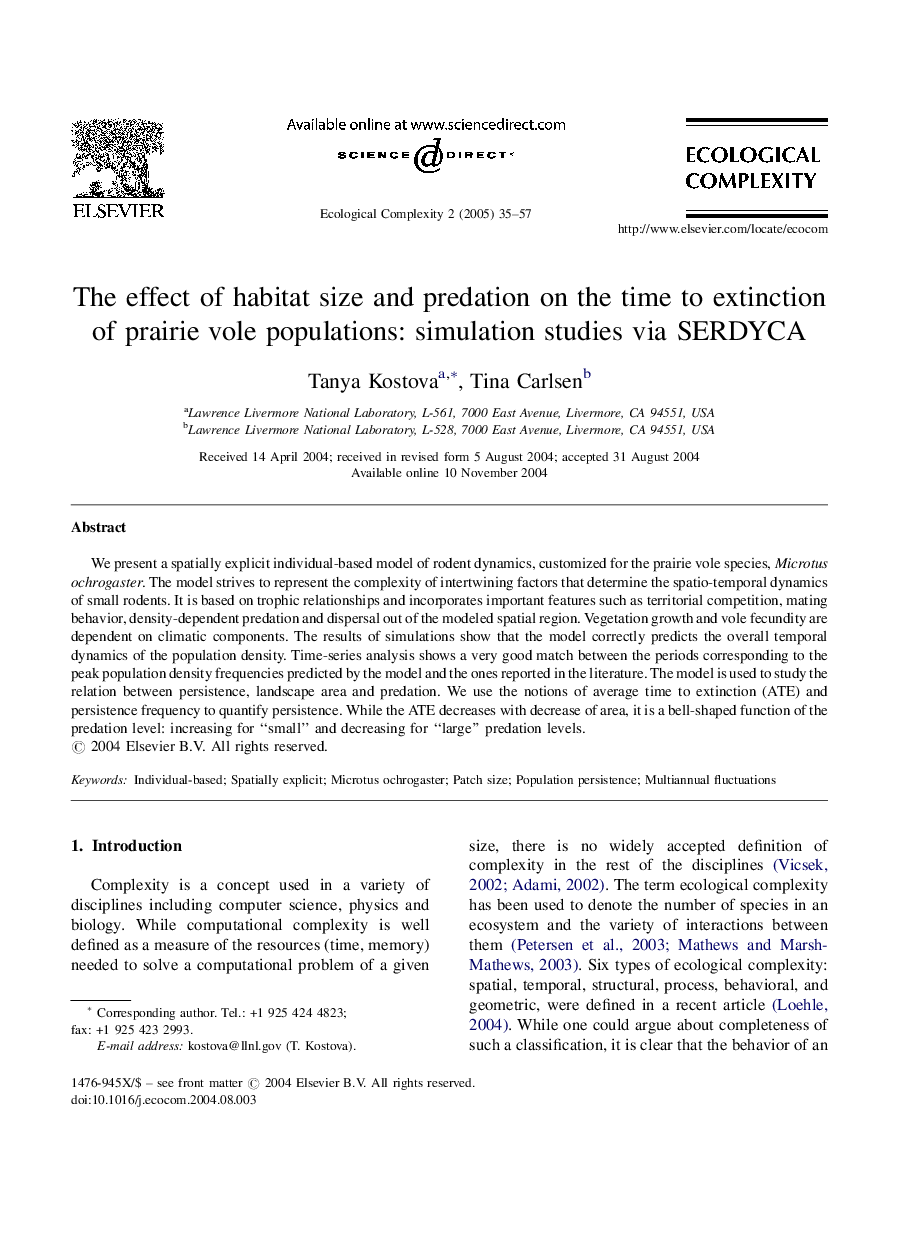| Article ID | Journal | Published Year | Pages | File Type |
|---|---|---|---|---|
| 9443118 | Ecological Complexity | 2005 | 23 Pages |
Abstract
We present a spatially explicit individual-based model of rodent dynamics, customized for the prairie vole species, Microtus ochrogaster. The model strives to represent the complexity of intertwining factors that determine the spatio-temporal dynamics of small rodents. It is based on trophic relationships and incorporates important features such as territorial competition, mating behavior, density-dependent predation and dispersal out of the modeled spatial region. Vegetation growth and vole fecundity are dependent on climatic components. The results of simulations show that the model correctly predicts the overall temporal dynamics of the population density. Time-series analysis shows a very good match between the periods corresponding to the peak population density frequencies predicted by the model and the ones reported in the literature. The model is used to study the relation between persistence, landscape area and predation. We use the notions of average time to extinction (ATE) and persistence frequency to quantify persistence. While the ATE decreases with decrease of area, it is a bell-shaped function of the predation level: increasing for “small” and decreasing for “large” predation levels.
Related Topics
Life Sciences
Agricultural and Biological Sciences
Ecology, Evolution, Behavior and Systematics
Authors
Tanya Kostova, Tina Carlsen,
